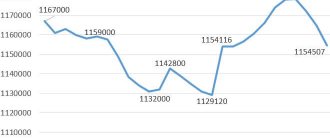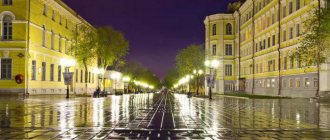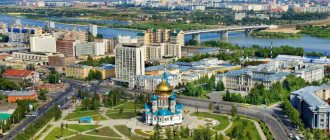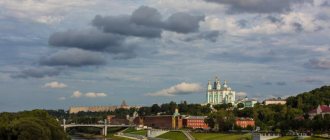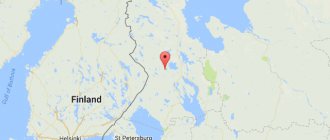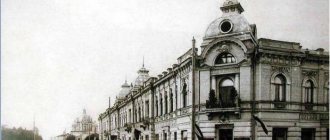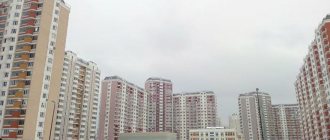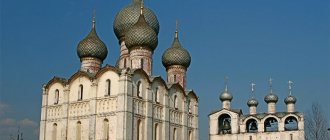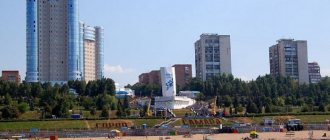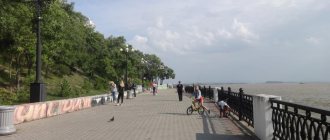“The city is great and full of people” - this is how the Ustyuzhan Chronicle of the 9th century describes the glorious ancient Smolensk. This is the very first mention of the glorious Smolensk region. For the second millennium, an ancient Russian city has been standing on the banks of the Dnieper, which has become a major regional center. Traveling through these places becomes a real discovery of the glorious region. Not only the nature and architecture are surprising, but also the population of the Smolensk region. Guests here are always greeted warmly, with Russian grandeur.
Location of the Smolensk region
The western borders of the Russian land are framed by the glorious Smolensk lands, which can be compared to a wise old warrior guarding peace. And, indeed, more than once this heroic city became a shield for Russia. Smolensk itself is located in the upper reaches of the Dnieper River at a distance of 365 km from Moscow. The Smolensk region is a subject of the Russian Federation and is part of the Central Federal District.
The city, which originated on seven hills, along which the trade route from the “Varyags to the Greeks” passed, became the center of many settlements. Today, the Smolensk region has a common border with the Bryansk, Pskov, Moscow, Kaluga, and Tver regions. Belarus adjoins the Smolensk region with the Vitebsk and Mogilev regions. The region was formed in 1937.
Residents in populated areas of the region (cities, towns, villages)
| Smolensk region | 921 127 | 663 281 | 257 846 |
| Urban district - City of Smolensk | 320 170 | 320 170 | 0 |
| Smolensk | 320 170 | 320 170 | 0 |
| Urban district - City of Desnogorsk | 27 083 | 27 051 | 32 |
| Desnogorsk | 27 051 | 27 051 | 0 |
| Velizh municipal district | 10 117 | 6 639 | 3 478 |
| Velizh urban settlement | 7 041 | 6 639 | 402 |
| Velizh | 6 639 | 6 639 | 0 |
| Krutovo rural settlement | 914 | 0 | 914 |
| Pechenkovskoe rural settlement | 828 | 0 | 828 |
| Seleznevskoye rural settlement | 1 334 | 0 | 1 334 |
| Vyazemsky municipal district | 73 861 | 52 434 | 21 427 |
| Vyazemsky urban settlement | 52 434 | 52 434 | 0 |
| Vyazma | 52 434 | 52 434 | 0 |
| Andreikovskoe rural settlement | 3 310 | 0 | 3 310 |
| Vyazma-Bryansk rural settlement | 5 302 | 0 | 5 302 |
| Kaydakovskoe rural settlement | 2 301 | 0 | 2 301 |
| Novoselskoe rural settlement | 2 365 | 0 | 2 365 |
| Semlyovskoe rural settlement | 3 002 | 0 | 3 002 |
| Stepanikovskoe rural settlement | 1 900 | 0 | 1 900 |
| Tumanovskoe rural settlement | 3 247 | 0 | 3 247 |
| Gagarinsky municipal district | 44 183 | 28 702 | 15 481 |
| Gagarin urban settlement | 28 702 | 28 702 | 0 |
| Gagarin | 28 702 | 28 702 | 0 |
| Gagarin rural settlement | 6 178 | 0 | 6 178 |
| Karmanovskoe rural settlement | 3 402 | 0 | 3 402 |
| Nikolskoye rural settlement | 5 901 | 0 | 5 901 |
| Glinkovsky municipal district | 3 969 | 0 | 3 969 |
| Boltutinskoye rural settlement | 821 | 0 | 821 |
| Glinka rural settlement | 2 308 | 0 | 2 308 |
| Dobrominskoe rural settlement | 840 | 0 | 840 |
| Demidovsky municipal district | 10 967 | 7 399 | 3 568 |
| Demidovskoe urban settlement | 6 138 | 6 033 | 105 |
| Demidov | 6 033 | 6 033 | 0 |
| Przhevalskoe urban settlement | 1 366 | 1 366 | 0 |
| town Przhevalskoe | 1 366 | 1 366 | 0 |
| Borkovskoe rural settlement | 282 | 0 | 282 |
| Zaborevskoe rural settlement | 1 388 | 0 | 1 388 |
| Slobodskoe rural settlement | 127 | 0 | 127 |
| Titovshchinskoe rural settlement | 1 666 | 0 | 1 666 |
| Dorogobuzhsky municipal district | 24 608 | 20 317 | 4 291 |
| Dorogobuzhskoe urban settlement | 9 202 | 9 202 | 0 |
| Dorogobuzh | 9 202 | 9 202 | 0 |
| Verkhnedneprovskoye urban settlement | 11 115 | 11 115 | 0 |
| Verkhnedneprovsky village | 11 115 | 11 115 | 0 |
| Aleksinsky rural settlement | 1 208 | 0 | 1 208 |
| Mikhailovskoye rural settlement | 1 625 | 0 | 1 625 |
| Usvyatskoye rural settlement | 1 458 | 0 | 1 458 |
| Dukhovshchinsky municipal district | 14 189 | 9 018 | 5 171 |
| Dukhovshchinskoe urban settlement | 3 891 | 3 832 | 59 |
| Dukhovshchina | 3 832 | 3 832 | 0 |
| Ozernenskoe urban settlement | 5 330 | 5 186 | 144 |
| village Ozerny | 5 186 | 5 186 | 0 |
| Bulgakovskoe rural settlement | 1 070 | 0 | 1 070 |
| Prechistenskoye rural settlement | 2 275 | 0 | 2 275 |
| Tretyakov rural settlement | 1 623 | 0 | 1 623 |
| Elninsky municipal district | 12 047 | 8 629 | 3 418 |
| Elninskoe urban settlement | 8 801 | 8 629 | 172 |
| Yelnya | 8 629 | 8 629 | 0 |
| Bobrovichi rural settlement | 736 | 0 | 736 |
| Korobetskoye rural settlement | 1 110 | 0 | 1 110 |
| Leonidovskoe rural settlement | 1 400 | 0 | 1 400 |
| Ershichi municipal district | 5 586 | 0 | 5 586 |
| Vorginskoe rural settlement | 811 | 0 | 811 |
| Ershichi rural settlement | 3 061 | 0 | 3 061 |
| Kuzmichskoe rural settlement | 801 | 0 | 801 |
| Ruhanskoe rural settlement | 913 | 0 | 913 |
| Kardymovsky municipal district | 12 148 | 4 628 | 7 520 |
| Kardymovskoye urban settlement | 5 017 | 4 628 | 389 |
| Kardymovo village | 4 628 | 4 628 | 0 |
| Kamenskoye rural settlement | 2 461 | 0 | 2 461 |
| Tyushinsky rural settlement | 2 328 | 0 | 2 328 |
| Shokinskoye rural settlement | 2 342 | 0 | 2 342 |
| Krasninsky municipal district | 11 647 | 4 051 | 7 596 |
| Krasninskoye urban settlement | 4 150 | 4 051 | 99 |
| village Krasny | 4 051 | 4 051 | 0 |
| Gusinsky rural settlement | 4 002 | 0 | 4 002 |
| Maleevskoe rural settlement | 1 546 | 0 | 1 546 |
| Merlin rural settlement | 1 949 | 0 | 1 949 |
| Monastyrshchinsky municipal district | 8 572 | 3 471 | 5 101 |
| Monastyrschinskoe urban settlement | 3 471 | 3 471 | 0 |
| town Monastyrshchyna | 3 471 | 3 471 | 0 |
| Alexandrovskoye rural settlement | 759 | 0 | 759 |
| Barsukovskoe rural settlement | 601 | 0 | 601 |
| Gogol rural settlement | 924 | 0 | 924 |
| Novomikhailovskoe rural settlement | 702 | 0 | 702 |
| Sobolevskoye rural settlement | 1 100 | 0 | 1 100 |
| Tatar rural settlement | 1 015 | 0 | 1 015 |
| Novoduginsky municipal district | 8 672 | 0 | 8 672 |
| Vysokovskoe rural settlement | 1 095 | 0 | 1 095 |
| Dnieper rural settlement | 1 504 | 0 | 1 504 |
| Izvekovskoe rural settlement | 981 | 0 | 981 |
| Novoduginskoe rural settlement | 4 124 | 0 | 4 124 |
| Tesovskoe rural settlement | 968 | 0 | 968 |
| Pochinkovsky municipal district | 28 689 | 8 171 | 20 518 |
| Pochinkovskoe urban settlement | 8 171 | 8 171 | 0 |
| Pochinok | 8 171 | 8 171 | 0 |
| Leninsky rural settlement | 2 108 | 0 | 2 108 |
| Muryginskoye rural settlement | 5 010 | 0 | 5 010 |
| Prudkovskoe rural settlement | 3 318 | 0 | 3 318 |
| Stodolishchenskoe rural settlement | 4 380 | 0 | 4 380 |
| Shatalovskoe rural settlement | 5 702 | 0 | 5 702 |
| Roslavl municipal district | 65 982 | 48 228 | 17 754 |
| Roslavl urban settlement | 48 228 | 48 228 | 0 |
| Roslavl | 48 228 | 48 228 | 0 |
| Astapkovichi rural settlement | 2 100 | 0 | 2 100 |
| Ekimovichi rural settlement | 2 221 | 0 | 2 221 |
| Kirillovskoe rural settlement | 2 502 | 0 | 2 502 |
| Lipovskoe rural settlement | 1 189 | 0 | 1 189 |
| Lyubovskoe rural settlement | 1 354 | 0 | 1 354 |
| Oster rural settlement | 4 020 | 0 | 4 020 |
| Perenskoye rural settlement | 1 280 | 0 | 1 280 |
| Prigoryevskoe rural settlement | 1 801 | 0 | 1 801 |
| Syrokorenskoye rural settlement | 1 287 | 0 | 1 287 |
| Rudnyansky municipal district | 21 940 | 12 616 | 9 324 |
| Rudnyanskoe urban settlement | 9 413 | 9 413 | 0 |
| Rudnya | 9 413 | 9 413 | 0 |
| Golynkovskoe urban settlement | 3 203 | 3 203 | 0 |
| Golynki village | 3 203 | 3 203 | 0 |
| Lubavitch rural settlement | 2 026 | 0 | 2 026 |
| Perevolochskoe rural settlement | 2 214 | 0 | 2 214 |
| Ponizovskoe rural settlement | 2 003 | 0 | 2 003 |
| Chistikovskoe rural settlement | 3 081 | 0 | 3 081 |
| Safonovsky municipal district | 54 986 | 40 537 | 14 449 |
| Safonovskoe urban settlement | 40 537 | 40 537 | 0 |
| Safonovo | 40 537 | 40 537 | 0 |
| Baranovskoe rural settlement | 1 725 | 0 | 1 725 |
| Beleninskoe rural settlement | 878 | 0 | 878 |
| Vadinskoe rural settlement | 3 032 | 0 | 3 032 |
| Vyshegorskoye rural settlement | 2 461 | 0 | 2 461 |
| Zimnitskoye rural settlement | 677 | 0 | 677 |
| Izdeshkovskoye rural settlement | 1 736 | 0 | 1 736 |
| Kazulinskoye rural settlement | 619 | 0 | 619 |
| Nikolo-Pogorelovskoye rural settlement | 518 | 0 | 518 |
| Prudkovskoe rural settlement | 928 | 0 | 928 |
| Pushkinskoe rural settlement | 662 | 0 | 662 |
| Rybkovskoe rural settlement | 766 | 0 | 766 |
| Staroselskoye rural settlement | 447 | 0 | 447 |
| Smolensk municipal district | 61 385 | 0 | 61 385 |
| Volokovskoe rural settlement | 621 | 0 | 621 |
| Vyazginskoe rural settlement | 853 | 0 | 853 |
| Gnezdovo rural settlement | 4 302 | 0 | 4 302 |
| Divasovskoe rural settlement | 5 350 | 0 | 5 350 |
| Kasplyanskoe rural settlement | 1 200 | 0 | 1 200 |
| Katyn rural settlement | 4 409 | 0 | 4 409 |
| Kozinskoe rural settlement | 9 905 | 0 | 9 905 |
| Korokhotkinskoye rural settlement | 5 403 | 0 | 5 403 |
| Koshchinskoe rural settlement | 2 111 | 0 | 2 111 |
| Loin rural settlement | 539 | 0 | 539 |
| Mikhnovskoye rural settlement | 2 716 | 0 | 2 716 |
| Novoselskoe rural settlement | 1 145 | 0 | 1 145 |
| Pecherskoe rural settlement | 6 289 | 0 | 6 289 |
| Pionerskoe rural settlement | 1 124 | 0 | 1 124 |
| Prigorskoe rural settlement | 5 855 | 0 | 5 855 |
| Smetaninskoye rural settlement | 1 700 | 0 | 1 700 |
| Stabenskoe rural settlement | 3 648 | 0 | 3 648 |
| Talashkinskoe rural settlement | 2 413 | 0 | 2 413 |
| Khokhlovskoye rural settlement | 1 802 | 0 | 1 802 |
| Sychevsky municipal district | 13 348 | 8 394 | 4 954 |
| Sychevskoe urban settlement | 8 394 | 8 394 | 0 |
| Sychevka | 8 394 | 8 394 | 0 |
| Duginskoye rural settlement | 1 122 | 0 | 1 122 |
| Karavaevskoe rural settlement | 1 415 | 0 | 1 415 |
| Maltsevskoe rural settlement | 1 458 | 0 | 1 458 |
| Nikolskoye rural settlement | 959 | 0 | 959 |
| Temkinsky municipal district | 5 561 | 0 | 5 561 |
| Batyushkovskoe rural settlement | 968 | 0 | 968 |
| Medvedevskoe rural settlement | 1 152 | 0 | 1 152 |
| Pavlovskoe rural settlement | 1 141 | 0 | 1 141 |
| Temkinskoe rural settlement | 2 300 | 0 | 2 300 |
| Ugransky municipal district | 7 082 | 0 | 7 082 |
| Vskhodskoe rural settlement | 1 414 | 0 | 1 414 |
| Znamenskoye rural settlement | 1 741 | 0 | 1 741 |
| Ugranskoe rural settlement | 3 927 | 0 | 3 927 |
| Khislavichsky municipal district | 7 478 | 3 755 | 3 723 |
| Khislavichskoe urban settlement | 3 755 | 3 755 | 0 |
| village Khislavichi | 3 755 | 3 755 | 0 |
| Vladimirovskoye rural settlement | 128 | 0 | 128 |
| Gorodishchenskoe rural settlement | 951 | 0 | 951 |
| Kozhukhovichi rural settlement | 704 | 0 | 704 |
| Korzovskoye rural settlement | 817 | 0 | 817 |
| Pecherskoe rural settlement | 742 | 0 | 742 |
| Cherepovskoe rural settlement | 381 | 0 | 381 |
| Kholm-Zhirkovsky municipal district | 8 784 | 3 064 | 5 720 |
| Kholm-Zhirkovskoe urban settlement | 3 206 | 3 064 | 142 |
| village Kholm-Zhirkovsky | 3 064 | 3 064 | 0 |
| Agibalovskoe rural settlement | 832 | 0 | 832 |
| Bogdanovskoye rural settlement | 1 053 | 0 | 1 053 |
| Igorevskoe rural settlement | 1 646 | 0 | 1 646 |
| Lekhminskoye rural settlement | 1 026 | 0 | 1 026 |
| Tupikovskoe rural settlement | 1 021 | 0 | 1 021 |
| Shumyachsky municipal district | 8 749 | 3 622 | 5 127 |
| Shumyachskoe urban settlement | 3 622 | 3 622 | 0 |
| village Shumyachi | 3 622 | 3 622 | 0 |
| Nadejkovichi rural settlement | 456 | 0 | 456 |
| Ozernoe rural settlement | 903 | 0 | 903 |
| Pervomaiskoe rural settlement | 1 563 | 0 | 1 563 |
| Poniatovskoe rural settlement | 665 | 0 | 665 |
| Russian rural settlement | 632 | 0 | 632 |
| Snegirevskoe rural settlement | 620 | 0 | 620 |
| Studenetskoe rural settlement | 288 | 0 | 288 |
| Yartsevo municipal district | 49 324 | 42 385 | 6 939 |
| Yartsevo urban settlement | 42 385 | 42 385 | 0 |
| Yartsevo | 42 385 | 42 385 | 0 |
| Kapyrevshchinskoe rural settlement | 1 974 | 0 | 1 974 |
| Mikheykovskoe rural settlement | 1 410 | 0 | 1 410 |
| Mushkovichi rural settlement | 717 | 0 | 717 |
| Podroshchinskoe rural settlement | 837 | 0 | 837 |
| Suetovskoe rural settlement | 2 001 | 0 | 2 001 |
Brief description of the area
The Smolensk region occupies about 50,000 km in the center of the East European Plain. There are both highlands and lowlands here. The climate here is moderate continental, as the climate zone is temperate. Driving through this area, you can observe wavy surfaces, hilly areas, and river valleys.
On the territory of the Smolensk region there are many minerals of sedimentary origin. Here you can encounter deposits of brown coal, peat, rock salt, loam, and clay. Nature has not deprived these lands of healing mud and mineral waters. Sometimes there are deposits of rock crystal, silicon, ore, and ocher. Peat reserves in this area are very large. Sand, gravel, and gypsum are mined here for construction work.
In winter the temperature here is moderately frosty, in summer it is warm and rainy. Such tributaries of the Dnieper as the Vyazma, Vop, Desna, and Sozh flow through the region. From here such large rivers as the Volga and Oka, into which the Vazuza and Ugra flow, also replenish their water reserves.
The main area of the Smolensk region is occupied by sod-podzolic soils. Sometimes there are sandy and loamy areas. There are many forests, meadows, and swamps in this region. Cultivated plants are widely planted. The main representatives of forests are spruce, birch, and aspen. Oaks, maples, ash trees, and linden trees are slightly less represented. The fauna here is represented by many species of mammals and birds. About 50 species of fish are found in local reservoirs.
Historical information
Initially, the Krivichi lived on the lands of the Smolensk region; the population of the Smolensk region originates from them. Then the city was under the control of Kievan Rus for a long time. The heyday of the Smolensk Principality occurred in the 12th century. For some time, part of the lands was part of the Lithuanian Principality, and later they were annexed by the Moscow Principality. The final transition of the Smolensk lands to the Russian state occurred after the Russian-Polish confrontations. This is how the Smolensk province arose in the 18th century.
At the beginning of the Soviet period, some part of the Smolensk region was part of the Belarusian SSR. And since 1937 it has acquired modern borders.
Population of the Smolensk region
The 2010 All-Russian Census found that out of 18 regions of the Central District of the Federation, the Smolensk Territory took 16th place. The population of the Smolensk region then amounted to 985,500 people. During historical events, this figure changed very often. According to Rosstat, in 2013 the population density of the Smolensk region was 19.59 people per sq. km. The decrease in density was once greatly influenced by urbanization.
The urban population significantly exceeds the number of rural residents. So this ratio is equal to 72% of urban residents to 28% of the rural population. The number of women in relation to men is also significantly higher. The number of women is currently 536,900, and men - 448,600.
In the capital of the region, the city of Smolensk, according to estimates as of January 2017, 328,906 people live.
Map of the Smolensk region with cities, districts and villages
| 1. Smolensk | 9. Temkino pst (Temkinsky district) | 17. Demidov city (Demidovsky district) | 25. Kardymovo district (Kardymovsky district) |
| 2. Safonovo city (Safonovsky district) | 10. Shumyachi rp (Shumyachsky district) | 18. Dorogobuzh city (Dorogobuzh district) | 26. Desnogorsk |
| 3. Izdeshkovo town (Safonovsky district) | 11. Yartsevo city (Yartsevo district) | 19. Glinka p. (Glinkovsky district) | 27. Ershichi s. (Ershichi district) |
| 4. Golynki town (Rudnyansky district) | 12. Kholm-Zhirkovsky town (Kholm-Zhirkovsky district) | 20. Gagarin city (Gagarinsky district) | 28. Yelnya city (Elninsky district) |
| 5. Roslavl (Roslavl district) | 13. Khislavichi town (Khislavichi district) | 21. Velizh city (Velizh district) | 29. Ozerny town (Dukhovshchinsky district) |
| 6. Pochinok city (Pochinkovsky district) | 14. Ugra town (Ugransky district) | 22. Vyazma city (Vyazemsky district) | 30. Monastyrshchina town (Monastyrshchina district) |
| 7. Sychevka city (Sychevsky district) | 15. Novodugino village (Novoduginsky district) | 23. Verkhnedneprovsky town (Dorogobuzhsky district) | |
| 8. Rudnya city (Rudnyansky district) | 16. Krasny town (Krasninsky district) | 24. Dukhovshchina city (Dukhovshchinsky district) |
Satellite map of the Smolensk region
Switching between the satellite map of the Smolensk region and the schematic one is done in the lower left corner of the interactive map.
Smolensk region - Wikipedia:
Date of formation of the Smolensk region:
September 27, 1937
Population of the Smolensk region:
921,127 people.
(January 1, 2022) Telephone code of the Smolensk region:
481
Area of the Smolensk region:
49,800 km²
Vehicle code of the Smolensk region:
67
Districts of the Smolensk region:
Velizhsky • Vyazemsky • Gagarinsky • Glinkovsky • Demidovsky • Dorogobuzhsky • Dukhovshchinsky • Elninsky • Ershichsky • Kardymovsky • Krasninsky • Monastyrshchinsky • Novoduginsky • Pochinkovsky • Roslavlsky • Rudnyansky • Safonovsky • Smolensky • Sychevsky • Temkinsky • Ugransky • Khislavichsky • Kholm-Zhirkovsky • Shum Yachsky district • Yartsevo district.
Cities of the Smolensk region - list of cities in alphabetical order:
Population of cities in the Smolensk region in 2017.
City of Velizh
— City population: 7016 people.
City of Vyazma
- City population: 53,117 people.
City of Gagarin
- City population: 29,285 people.
City of Demidov
- City population: 6289 people.
City of Desnogorsk
- City population: 28,103 people.
City of Dorogobuzh
- City population: 9966 people.
City of Dukhovshchina
- City population: 4184 people.
City of Yelnya
- City population: 9168 people.
City of Pochinok
- City population: 8688 people.
City of Roslavl
- City population: 50,870 people.
City of Rudnya
- City population: 9484 people.
City of Safonovo
- City population: 42,707 people.
City of Smolensk
- City population: 329,853 people.
City of Sychevka
- City population: 8228 people.
City of Yartsevo
- City population: 44,740 people.
Smolensk region
is located in the western European region of Russia and has been described as the "Gateway to Europe" as trains from Moscow pass through Smolensk on their way to Berlin, Prague, Paris and other European cities.
The administrative center of the Smolensk region is the city of Smolensk
, which is one of the oldest cities in Russia and is famous for its Kremlin surrounding the city center.
The stunningly beautiful Assumption Cathedral takes pride of place on the highest hill of the city. The cathedral once housed the revered Smolensk Icon of the Mother of God. Unfortunately, the icon was lost without a trace during the Second World War.
The Smolensk Poozerie National Park has many hiking routes and includes more than 35 lakes.
One of the most interesting tourist attractions in the Smolensk region is the Talashkino estate, which was a thriving center of Russian art in the late 19th and early 20th centuries. The estate was visited by many famous Russian artists, including Mikhail Vrubel, Nicholas Roerich, Mikhail Nesterov, Alexey Korovin and Ilya Repin. Talashkino is considered a community of creative and talented craftsmen - artists, writers and musicians.
A more grim sight is the Katyn Memorial, located near Smolensk, which is dedicated to the victims of Stalin's repression, especially the thousands of Polish officers.
One of the most famous sons of the Smolensk region - the first man to go into space - Yuri Gagarin - and the city near which he lived was renamed in his honor. It has several museums dedicated to him and his historic space flight. Gagarin was previously known as Gzhatsk, but was renamed in honor of the world's first cosmonaut, who was born outside the city in the village of Klushino.
Vyazma is located between Smolensk and Moscow, and over its history it has suffered at the hands of the armies of both Napoleon and Hitler. As a result, the city was named the City of Military Glory. The city once had a Kremlin that helped defend Russia's western border, but today only one tower remains. In addition, Vyazma boasts an unusual church in the form of the Church of Hodegetria - one of three three-decker churches in Russia.
Historical monuments and attractions are what the Smolensk region of Russia has always been famous for. Memorial complexes, temples, cathedrals - all this splendor can be seen in Smolensk cities, especially in Smolensk. And all because this city is one of the oldest in the state, the first mention of which appeared in 863.
Population of the Smolensk region by city and district
The largest city in the Smolensk region, of course, is the capital of the region - Smolensk. The size of this city was mentioned above. The second largest is the glorious regional center of Vyazma, where 54,259 people live. Following it is the city of Roslavl with a population of 51,775 inhabitants. The regional centers of Yartsevo and Safonovo are almost identical in number of people (46,219 and 43,727). The city of Gagarin has a population of 26,916 people, and Desnogorsk has a population of 28,518. Here are other, less populated cities in the Smolensk region by population:
- Rudnya - 9,650.
- Yelnya - 9 460.
- Repairs - 8,684.
- Sychevka - 8,246.
- Velizh - 7,078.
- Demidov - 6,585.
- Spirituality - 4,125.
The population of the districts of the Smolensk region has the following indicators:
- Velizh district - 11,114.
- Vyazemsky district - 77,359.
- Gagarinsky district - 45,940.
- Glinkovsky district - 4,404.
- Demidovsky district - 12 310.
- Dorogobuzhsky district - 27,376.
- Dukhovshchinsky district - 15,484.
- Elninsky district - 13,846.
- Ershichi district - 6,444.
- Kardymovsky district - 12,499.
- Krasninsky district - 12,269.
- Monastyrshchinsky district - 9,472.
- Novoduginsky district - 9 603.
- Pochinkovsky district - 29,851.
- Roslavl district - 71,990.
- Rudnyansky district - 23,562.
- Safonovsky district - 58,803.
- Smolensk district - 53,889.
- Sychevsky district - 13,807.
- Temkinsky district - 5,971.
- Ugransky district - 8,190.
- Khislavichsky district - 8 106.
- Kholm-Zhirkovsky district - 9,754.
- Shumyachsky district - 9,909.
- Yartsevo district - 54,231.
Smolensk - regional center
The annual outflow is approximately 30 thousand people. In the list of cities with problematic demographics, Smolensk ranks high. Young people en masse are trying to move closer to the capital or are leaving there to make ends meet. Smolensk residents have a choice of several higher educational institutions, about 10 state ones, and there are also specialized secondary schools. There are clearly no problems with overcrowding in the city. But people are constantly indignant at the actions of the authorities, who are deforesting and do not care about roads and housing and communal services. We have already become accustomed to constant interruptions in hot water and heating. The situation is even worse with the roads. Many people began to buy cars, which in no way contributes to comfortable traffic. Large buses are rare; they are massively replaced by minibuses, which have to be crowded into. Like large cities, during rush hour Smolensk gets up for long hours.
Smolensk used to have excellent tram service. The tracks were dismantled, but an alternative option was never provided to the population. The paradox of the municipality’s actions is to provide the city with a fleet of trams and trolleybuses, but there is no action to establish the infrastructure necessary for these types of transport. That’s why now everyone has switched en masse to minibuses.
Smolensk does not have enough kindergartens, there are enough schools. Many families have little hope that their child will be able to go to kindergarten for free before going to school. Densely populated areas (Kiselevka) suffer from overdevelopment. This leads to problems in schools, which, although they have places, are overcrowded. There are few companies where you can get a job. OSRAM and the Kristall enterprise are considered the most prestigious. The latter made Smolensk famous throughout the country with its exclusive products encrusted with diamonds. Smolensk remains an important railway junction, and there is also a railway station specializing in government contracts. For the female part of the population there is a knitting factory and large retail chains.
Latest Population Counts
The population of the Smolensk region in 2016 was 958,600 people. As of January 1 of this year, there were 690,000 (72%) urban residents, 268,600 (28%) rural residents. It should be noted that the western regions of the region are more populated than the rest. The smallest population is in the eastern regions (Temkinsky, Ugransky). The number of children and adolescents is 336,000. The population of the Smolensk region in 2016 decreased by 6,000 people compared to 2015.
Administrative division
The Smolensk region includes 24 districts, 23 urban settlements, 278 rural settlements and 2 urban districts (Smolensk and Desnogorsk). There are a total of 257 municipalities within the district of the same name. These include 207 rural settlements, 23 urban settlements, 25 municipal districts and 2 urban districts.
Natural attractions
To preserve natural complexes, as well as for scientific purposes, the Smolensk Lake District was created in the region. This reserve received this name because of the 35 lakes that are part of it. Each of them is famous for its unique beauty. Visitors to the Smolensk Lake District plunge into a fabulous atmosphere. There are many historical monuments located on the territory of the reserve. One of them is the ancient ancient Russian city of Verzhavsk, which flourished in the 9th-12th centuries.
These amazingly beautiful places are also associated with the great traveler and explorer of Asian lands - N. M. Przhevalsky. Many tourists and locals know the famous spring called the “Holy Well”.
Yartsevo is a small but active town
On the territory of Yartsevo there are several enterprises that provide the population with work. Local residents have access to vocational education, which is provided by the Industrial College and the Avtokadry training complex.
Now the authorities are actively focusing on the development of industrial potential. In the entire region, Yartsevo is the most promising for attracting investment. Even foreign companies are ready to invest here. For a long time it was impossible to solve the housing problem, but in recent years a positive trend has emerged. Unfortunately, at the moment the city's population is steadily declining.
Architectural monuments
Among the most ancient architectural buildings in Smolensk, one can highlight the stone fortress. It was built under the leadership of Tsar Fyodor Ioanovich, since in the 16th-17th centuries territorial disputes arose between the Principality of Moscow and the Polish-Lithuanian Commonwealth. About 30,000 hired workers were used for this construction. This architectural monument consists of fortress walls and 38 towers, some of them reaching 33 meters in height. This is the most powerful wall of Russian times. The construction was supervised by the famous Smolensk master Fyodor Kon.
In the Smolensk region, like no other, monuments of Russian culture of the pre-Mongol period have been preserved. Here you can find works in the Baroque style, as well as unsurpassed examples of church construction.
In Smolensk there are several memorial signs and complexes that capture the memory of many military events. Also, many monumental monuments dedicated to famous fellow countrymen appeared here. “The green necklace of the city” is what the residents of Smolensk call their parks and squares.
Major museums and Orthodox churches
Many people have heard of the village of Boldino, in the Smolensk region. Very often tourists go there on excursions. One of the oldest and most beautiful objects here is the Holy Trinity Monastery. It was founded by the Venerable Gerasim of Boldinsky back in the 6th century. This temple has already been restored several times, but it also continues to delight its visitors.
In the village of Novospasskoye, Smolensk region, there is the museum-estate of M. I. Glinka, where he once lived. This estate is the only monument dedicated to the famous Russian composer. The estate consists of a main two-story house, a kitchen annex, a guest room, a bakery, a carriage house, beautiful gazebos and a family temple. Very often guests of the estate hear the enchanting sounds of a piano.
In the village of Khmelita, Smolensk region, the former estate of the Griboyedov family has been preserved. Some features of this building can be recognized in his immortal comedy “Woe from Wit”. The palace and park ensemble includes a stone house, 4 outbuildings, a park with alleys, 2 ponds and a temple.
Between the villages of Gnezdovo and Katyn, Smolensk region, the Katyn memorial complex is located. For a very long time during the Soviet period, this place was not mentioned, since tragic events took place here in 1940. It was in the local forest that several tens of thousands of Polish officers and other prisoners were shot. The memorial complex is very young; it was opened in 2000. The main entrance to the memorial is made in the form of glass gates. In the center of the complex there is a high Orthodox cross, from which there is a Memory Alley.
A lot of churches were built in the Smolensk region, but from the pre-Mongol period only three have survived: the Intercession Church, the Assumption Cathedral, the temple of St. Sergius in the church of the Ascension Monastery.
